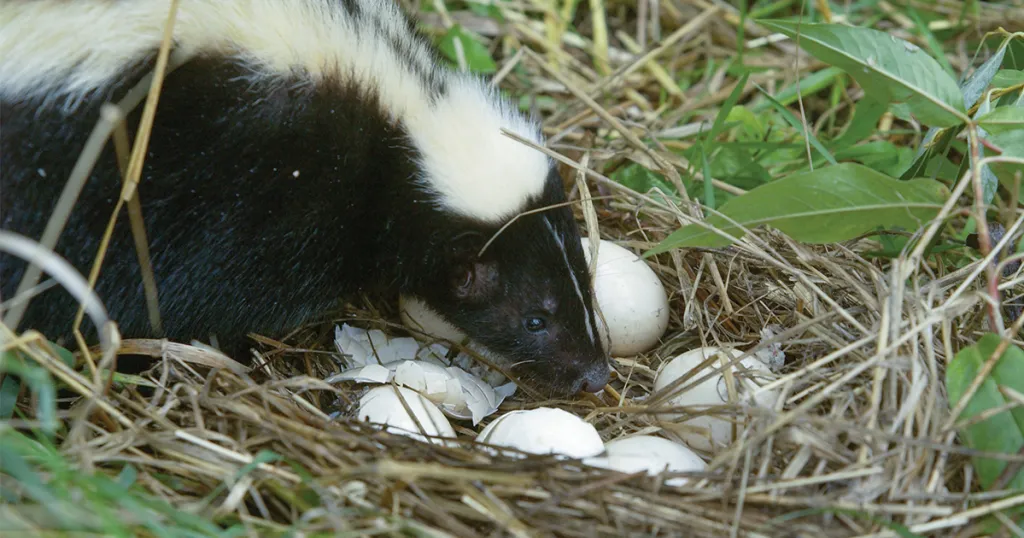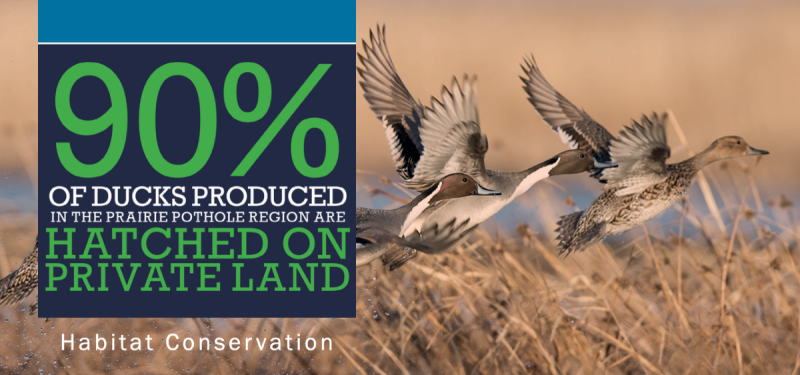
Projects
Here's just a small sampling we've helped preserve over the years.
Hen Houses
Delta Waterfowl puts more mallards into every fall flight!
Hen Houses are the most cost-effective tool to increase mallard production. Targeted to areas of the highest mallard breeding density, Delta Waterfowl Hen Houses consistently boost nest success to more than 60 percent. In areas where ground-nesting mallards typically achieve nest success of less than 10 percent, Hen Houses can increase nest success up to 80 percent
Today’s efficiently designed “Supersites” are a direct result of Delta’s extensive research. These clusters of 100 or more Hen Houses are installed in relatively small geographic areas with high breeding mallard densities. Supersites send thousands of mallards into every fall flight, while reducing the cost of labor and fuel to produce ducks.
Delta maintains Hen Houses across the key breeding areas of Manitoba, Saskatchewan, Alberta, North Dakota, Minnesota and Ontario. We currently have nearly 13,000 Hen Houses in place to protect hens and eggs from predators and increase duck production. Every year, these structures produce more than 45,000 ducklings.
Predator Management
The distribution and abundance of predators in the prairie pothole region and in other key breeding areas has shifted over time, putting breeding ducks at risk. For upland nesters, such as mallards, teal, gadwall, and pintails, predation by raccoons, skunks and other duck egg eaters often runs rampant on the prairies. This reality, coupled with declining duck nesting habitat, is disastrous for nest success—the primary factor that determines whether duck populations rise or fall.
Alarmed by plummeting duck numbers and restrictive seasons in the early 1990s, Delta Waterfowl was determined to find a management strategy to restore the region’s tremendous duck-producing potential.
Predator management has proven to be the most effective and efficient approach to increasing duck production. Delta’s research indicates that this tool is best applied across habitats with sparse nesting cover and intensive agriculture. Given agriculture’s permanent place on the prairie landscape and the ongoing losses of nesting cover, ensuring robust duck populations hinges on responsible predator management..
Habitat Conservation
Given that 90 percent of duck production occurs on private land, Delta Waterfowl believes that working with landowners is the key to addressing large-scale habitat challenges on the breeding grounds. Delta has researched and pioneered a voluntary, incentive-based approach to conserving the most essential — and threatened — breeding duck habitats: small wetlands and upland nesting cover.
After years of demonstrating the capabilities of this habitat strategy to work for both ducks and the agriculture community, the Delta model was recently adopted in the United States and Canada.
Working Wetlands
Working with agricultural and conservation leaders in North Dakota, Delta designed Working Wetlands to provide fair compensation to farmers to conserve critical, duck-producing ponds. Small, shallow ponds provide essential invertebrates to nesting hens and ducklings, but they are also at the highest risk of drainage. 93,500 acres of these wetlands were lost from 1997 to 2009, and millions of wetland basins remain at risk within the U.S. prairie pothole region, according to the U.S. Fish and Wildlife Service. Delta Waterfowl’s Working Wetlands was designed to conserve small wetlands in cropland by providing voluntary, incentive-based annual payments to farmers and landowners in return for the conservation of these resources.
Delta and our partners worked aggressively to include Working Wetlands in the 2018 Farm Bill. As a result –
U.S. Farm Bill Inclusion
Delta Waterfowl made an impressive and indelible mark on the North America conservation community when, in April 2020, the Natural Resources Conservation Service (NRCS) announced that they would implement and roll out the Prairie Pothole Water Quality and Wildlife Habitat program a program based closely on Delta’s Working Wetlands pilot program-across the Prairie Pothole States. Delta’s goal is to leverage the new tool to conserve the majority of the PPR’s more than 1.5 million eligible wetlands.
Manitoba Growing Outcomes in Watersheds
Delta Waterfowl’s advocacy efforts have resulted in a commitment by the Manitoba government to secure 90 percent of the province’s ephemeral and temporary wetlands — those most threatened and of highest importance to nesting ducks. Manitoba’s provincial government worked directly with Delta to create a new voluntary, incentive-based program called Growing Outcomes in Watersheds (GROW) to achieve this historic feat.
In late summer 2019, the Manitoba government doubled its investment in GROW, creating new incentives encouraging landowners to conserve wetlands and providing stable, perpetual funding. GROW is important validation of Delta’s long-standing work to find new solutions to conserve small wetlands on working farms.


